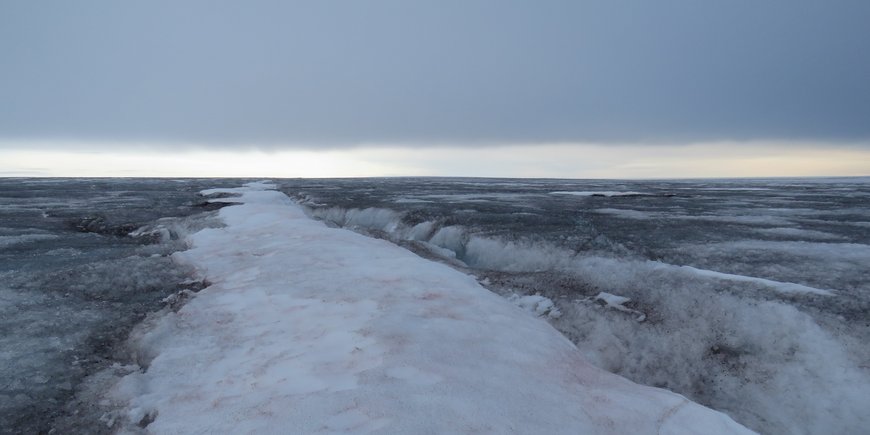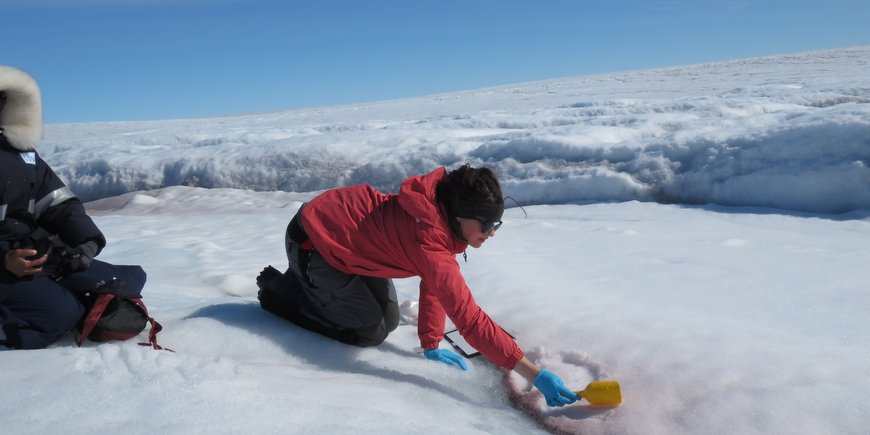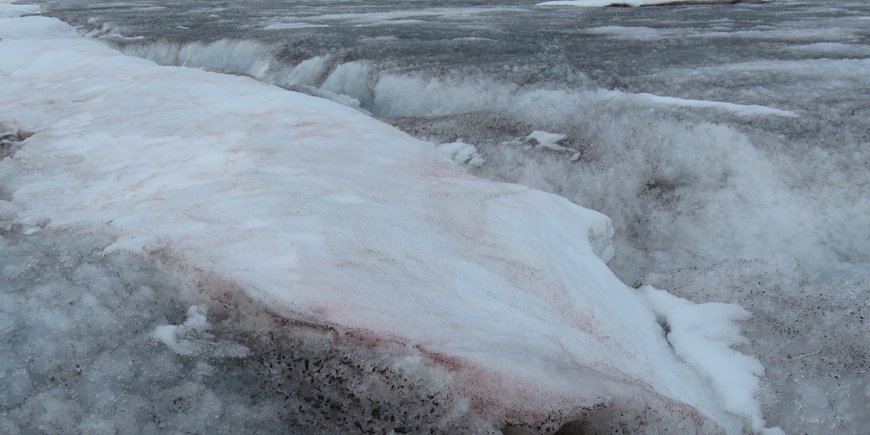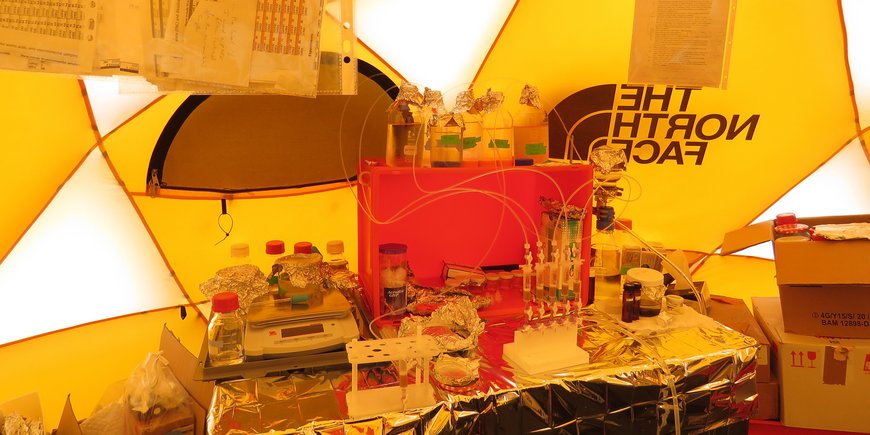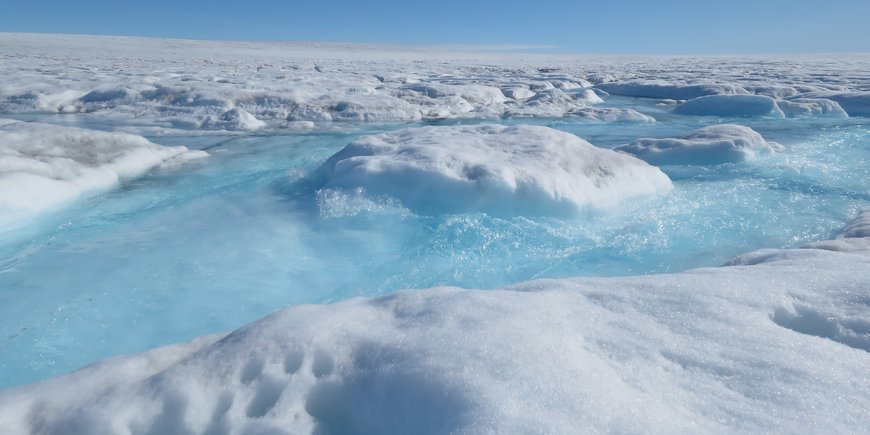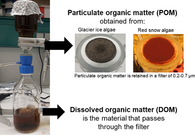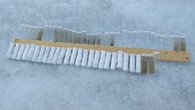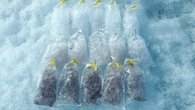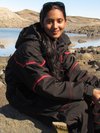Geochemistry and Carbon Dynamics of Arctic Ecosystems
Our research assesses the storage, dynamics, and fate of organic matter (OM) in snow and ice algae-dominated systems. Earth’s glaciers and ice sheets are examples of systems where large amounts of OM are stored and actively cycled by microorganisms adapted to colonize their surfaces. Photoautotrophic microorganisms such as cyanobacteria and algae living on snow and ice surfaces capture atmospheric CO2, converting it into OM for growth and proliferation while releasing organic metabolites into the environment. Additionally, glaciers and ice sheets also receive OM from anthropogenic and natural sources via aerial deposition and bedrock weathering.
Some of the OM may be mineralized to CO2 and CH4 or altered by heterotrophic microorganisms. Photochemical processes also alter the concentration, composition, and bioavailability of OM. Thus, biotic and abiotic processes on the glacier modify the nature of the organic species and their fate, shaping the microbial community structure. A fraction of the OM might resist degradation and be transported to adjacent marine and proglacial ecosystems with meltwater. Moreover, colored OM (e.g., pigmented algae) increases the absorption of solar radiation, resulting in faster melting of the ice and, subsequently, increasing downstream carbon export. These processes highlight the capacity of glaciers and ice sheets to directly impact local and potentially global carbon cycles.
Therefore, understanding the factors that influence organic carbon processing and fate on glacier surfaces is crucial to quantify both local and global carbon fluxes and their impacts on glaciers and adjacent ecosystems, especially in a warming climate. For this, we study dissolved and particulate organic matter (DOM and POM in Fig. 1) via targeted and untargeted high-resolution mass spectrometry approaches in environmental samples and in situ experiments (Fig. 2). The obtained information is evaluated in combination with the microbial community composition and glacier surface albedo, allowing us to improve our knowledge of the interplay between microbial metabolism, carbon cycling, and surface melting.


